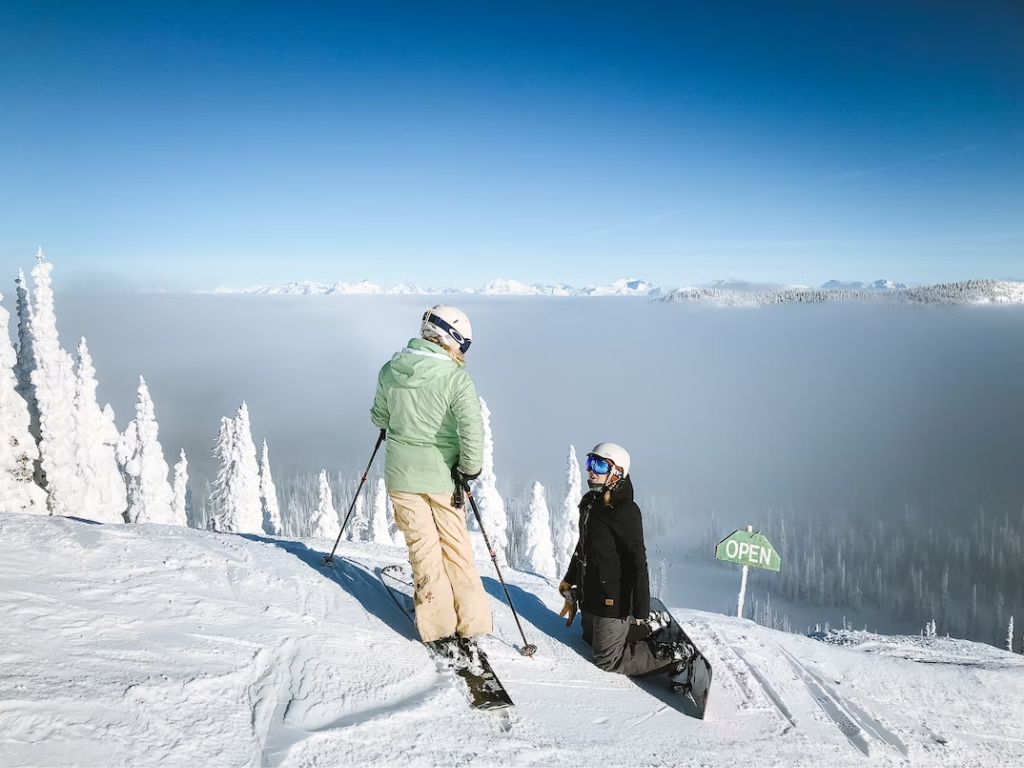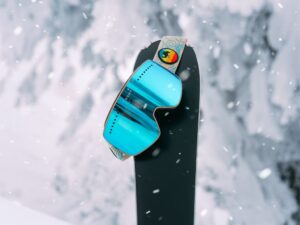Sometime over half a decade ago, when I was a beginner, I wanted to know about the ideal snowboarding conditions for beginners. This is what I found on Reddit back then:
New Snow Last 24 hrs: .5 ” Overnight*: .5 ” Last 48 hrs: 1 ” Last 7 days: 2 ” Snow Conditions “Powder” (Machined groomed ice with a .5″ dusting) Base Depth: 18 ” Season Total: 18 “
The user was helpful, but it’s the most complicated thing a beginner can read. So now, I’m making a guide that breaks everything down to help you understand the ideal snowboarding conditions.
Whether you’re a seasoned rider or a newbie eager to carve your first tracks, nailing the perfect snowboarding conditions is the key to an unforgettable experience. And I’ll help you do just that.
Here’s a quick answer if you’re in a hurry:
For ideal snowboarding conditions, look for temperatures around -20°F, fresh powder with a snow depth of 2 to 3 feet, and a resort with enough open runs to spread out the crowds. As for the timing, riders should hit the slopes in the morning during mid-January (peak snowboarding season in North America).
Ideal Snow Conditions Every Snowboarder Should Know
The ideal snow conditions depend on 7 major influencing factors: weather, temperature, snow quality, snow type, depth, time of day, and season.
1. What weather is best for snowboarding?
Regarding snowboarding, the weather can make all the difference between an epic day on the slopes and a less-than-ideal ride. Lemme explain.
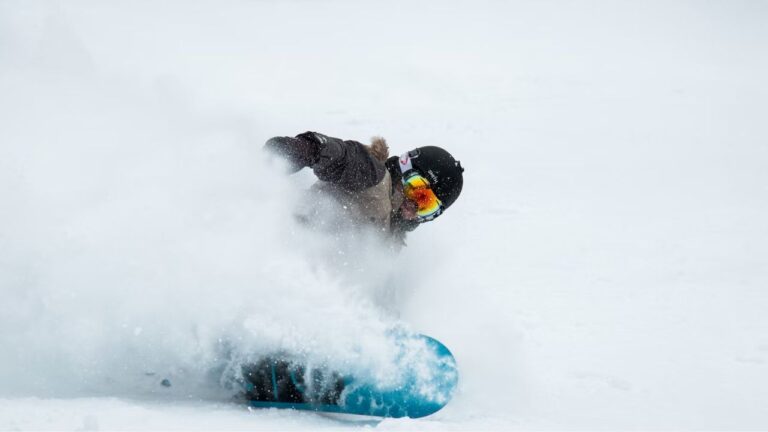
Ideally, fresh snow (or “fresh powder”) is the best weather condition for snowboarding. It offers a soft, forgiving surface, giving you that feeling of floating on clouds as you glide down the slopes. Catching those first tracks in the powder is an unforgettable experience for snowboarders.
But that also begs the question, can snow be too powdery for snowboarding? Unfortunately, yes. There can be too much of a good thing.
If there’s an excessive amount of powdery snow, it might be challenging to maintain your speed and control. Your board may sink too deep into the fluff, making maneuvering harder.
However, it’s nothing that you can’t solve by practicing harder and learning the right technique. The one thing you must avoid is snowboarding on days with any precipitation, rain, or sleet.
2. What is the best temperature for snowboarding?
Generally speaking, the ideal temperature for snowboarding is between 23°F to -4°F. In this range, the snow maintains a good balance between being firm enough for stability and soft enough for maneuverability. You’ll find that your board glides smoothly on the snow, allowing for an enjoyable ride.
Now, let’s talk about some essential tips for finding that ideal weather window for snowboarding.
- Checking the weather forecast is crucial before hitting the slopes. If possible, look for a day with temperatures around -4° Fahrenheit.
- While warm skies may seem inviting, the snow can get sticky and slow you down, not to mention leave you soaked from melting snow. Alternatively, biting the wind can make your ride less enjoyable in extremely cold weather.
3. What is the ideal snow quality for snowboarding?
Generally speaking, packed powder is the ideal snow quality every rider wants. It’s the byproduct of freshly fallen snow getting groomed and compacted by skiers and snowboarders. A smooth, firm surface offers excellent traction, allowing you to glide easily and control.
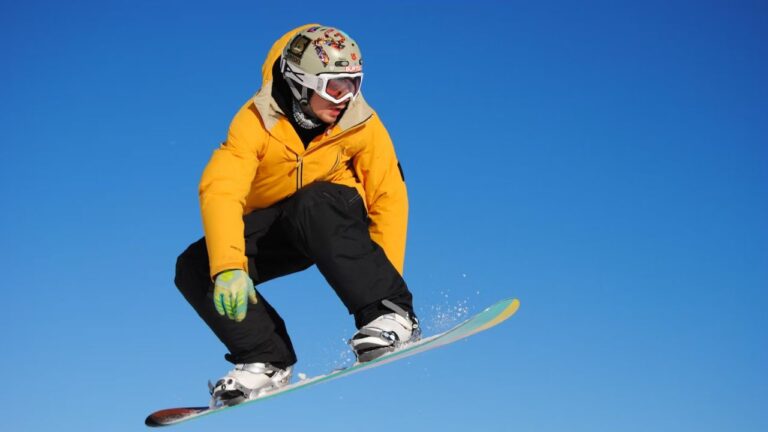
Alternatively, let me tell you about other conditions and how to improve your situation.
Wet snow, also known as spring snow or slush, occurs when the temperature rises and the snow starts to melt. While it might not be as enjoyable as fresh powder, it offers a softer surface that can feel playful under your board.
However, it can also be heavier and slower, so you must adjust your technique accordingly. The extra effort can still lead to a fun and memorable ride.
In comparison, icy conditions can be challenging for any snowboarder. When the snow freezes over, it creates a hard and slippery surface that can test your skills. However, you can still conquer the ice.
4. What type of snow is the best for snowboarding?
You need to look out for two types of snow when you’re snowboarding.
Cascade Concrete: The Challenging Heavyweight
Also known as wet snow, it’s a formidable opponent on the slopes. Falling during warmer temperatures, this heavy, dense snow is consistent with concrete. Riding can be challenging and slow.
Cascade Concrete accounts for about 10% of total snowfall and is common in the Pacific Northwest, particularly named after the Cascades mountain range.
Compared to regular snow, where the water-to-snow ratio is about 1:10 (1 inch of water = 10 inches of snow), Cascade Concrete can have a ratio as low as 1:5.
Light Fluffy Powder: The Rider’s Delight
The holy grail of snowboarding conditions is the legendary Light Fluffy Powder. The best temperature range for these types is between 0°F and 10°F.
Wind also plays a part in the quality of the powder. The less wind, the better, as gusts can pack or redistribute the snow, affecting its desired lightness.
5. What is the ideal snowpack (depth) for snowboarding?
The snowpack is the depth of fallen snow on the ground if you’re unaware. So, you want to avoid wet, heavy snow or snow packed too hard, as it can take away control and impact your overall ride.
Aim for a snow depth of around 2 to 3 feet for that perfect cushioned glide. The snow temperature is super important here. Around -22°F is close to a perfect snow temperature, as it maintains that light and fluffy powder we all love.
6. How much does the time of day matter?
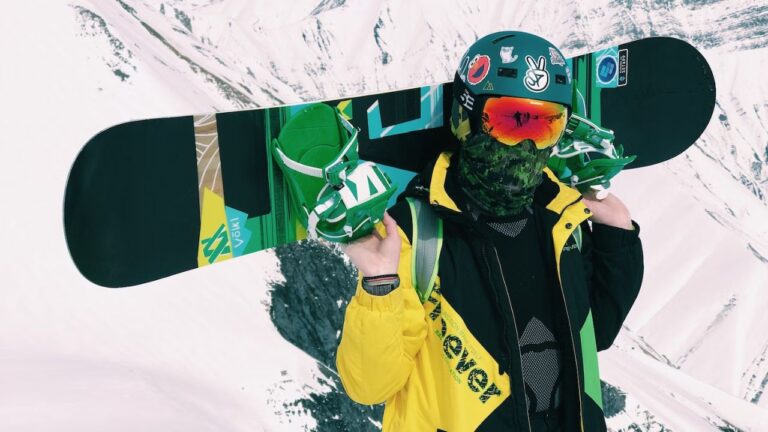
As the sun rises and sets, the snow-covered mountains transform, significantly impacting your snowboarding experience. But how much does it matter? How different is the morning snow compared to the afternoon or evening?
You will likely encounter freshly groomed trails and untouched powder in the early morning. The snow is generally firm and crisp, offering excellent traction and a smooth surface. It’s a fantastic time to hit the slopes and carve your way into the day with freshness and excitement.
As the day progresses, the snow might soften, especially in sunny areas. As we’ve discussed, the sun’s warmth will turn packed powder into slush. While softer snow is still enjoyable, it’s not the ideal condition.
The temperatures drop again in the evening, and the snow starts to freeze, creating icy patches. While this can be challenging for some riders, it presents an opportunity to hone your edge control and precision in carving.
Benefits of Snowboarding in the Morning:
Getting on the slopes early in the morning has several advantages. Besides enjoying freshly groomed trails and untouched powder, you’ll experience fewer crowds, providing more open space to explore. It’s a serene and peaceful time to connect with the mountain and embrace the thrill of being among the first riders on the slopes.
Benefits of Late-Day Snowboarding:
Late-day snowboarding can be equally enjoyable, especially if you prefer a more laid-back atmosphere. The slopes tend to be quieter as many riders head back to the lodges, leaving you with ample space to ride at your own pace.
7. What season is best for snowboarding?
Snowboarding is a year-round passion for many, but there’s a magic season when the mountains come alive with the perfect combination of weather and snow quality.
In North America, the peak season for snowboarding is a winter wonderland extravaganza that spans from late December to late March. These months offer the best weather conditions, creating the perfect canvas for the quality snow riders dream of.
Amid the peak season, mid-January emerges as a snowboarder’s sweet spot. By now, the snow has had ample time to pack and build up to an optimal level, providing a fantastic riding experience.
This time also has an additional perk – it’s less congested with riders. Many casual snowboarders have already had their fill of winter adventures, leaving the slopes more open and the waiting times shorter.
So, mark your calendars and get the boards ready!
Preparing for Optimal Snowboarding Conditions
Before you hit the slopes and embark on your snowboarding adventure, a little preparation can ensure you maximize those optimal snowboarding conditions.
- The first rule of thumb is closely monitoring weather forecasts and snow reports.
- Each mountain has its unique topography, influencing the snow conditions in various areas. You should take time to understand the layout instead of jumping on the board first.
- Remember that proper clothing and gear are essential for a comfortable and enjoyable snowboarding experience.
- Stay hydrated and fuel up so you don’t tire yourself out while snowboarding.
- Always follow the necessary safety protocols.

Conclusion
Fresh powder, packed powder, light, fluffy powder—each type of snow offers a unique experience for riders of all levels. Every condition is an opportunity to improve your skills while enjoying the ride.
The season plays a significant role in shaping the snowboarding paradise you’ll encounter. Don’t miss the peak season from late December to late March, with mid-January as your sweet spot.
As you prepare for your snowboarding adventure, heed the weather forecasts, prepare for the conditions, and stay hydrated to ensure a memorable experience. Safety is paramount, so only ride within your skill level.
How do you snowboard in the following conditions?
1. How do you snowboard in icy conditions?
Icy conditions can be intimidating, but you can still carve through the frozen terrain with the right techniques.
- Choose the Right Equipment: Opt for a snowboard with a good edge hold, sharp edges. It should also be stiffer for stability.
- Master Edge Control: Bend your knees and engage your edges firmly into the snow during turns.
- Take a Wider Stance: It can improve stability, making maintaining control on icy patches easier. Keep your weight slightly forward.
- Avoid Sudden Turns: Plan your turns ahead of time and initiate them gently, allowing your edges to grip the surface firmly.
2. How do you snowboard in bumpy snow?
Riding through bumpy snow can be challenging, but with the right approach, you can navigate these uneven terrains gracefully.
- Bend Your Knees: It acts as a natural shock absorber, helping you absorb the impact of bumps and uneven terrain.
- Stay Relaxed: Keeping it loose allows you to flow with the contours of the snow.
- Maintain a Steady Pace: Riding too fast can lead to losing control, while riding too slowly may cause you to catch an edge.
Look Ahead: Keep your gaze focused ahead of you rather than directly at the bumps. Anticipate the terrain and plan your movements accordingly.
Expert QnA
Q. How do weather conditions at high altitudes differ from lower ones?
In the mountainous world of snowboarding, elevation plays a significant role. As you ascend to higher elevations, temperatures tend to drop, and the weather can become more unpredictable. It’s essential to be prepared for changing conditions as you venture higher up the slopes.
Q. Can you snowboard in 70-degree weather?
Ideally, you shouldn’t snowboard or ski at 70°F as it’s quite warm for snow sports. The snow becomes slushy and soft at such high temperatures, making maintaining control and speed on the slopes challenging. Instead, look for temperatures between 23°F to -4°F.
Q. What temperature is too cold for snowboarding?
As a general guideline, extremely cold temperatures below -20°F (-29°C) are often considered uncomfortable and potentially hazardous for snowboarding. In such frigid conditions, the snow may become hard and icy, making it difficult to maintain control and enjoy a smooth ride.
Q. Is 2 inches of snow good for snowboarding?
Two inches of snow can add a light dusting of fresh powder to the slopes, which can be a pleasant experience for snowboarding. While it may not offer the deep and fluffy conditions that riders dream of, it can still create a smooth surface for gliding and enhance the overall enjoyment of snowboarding.

